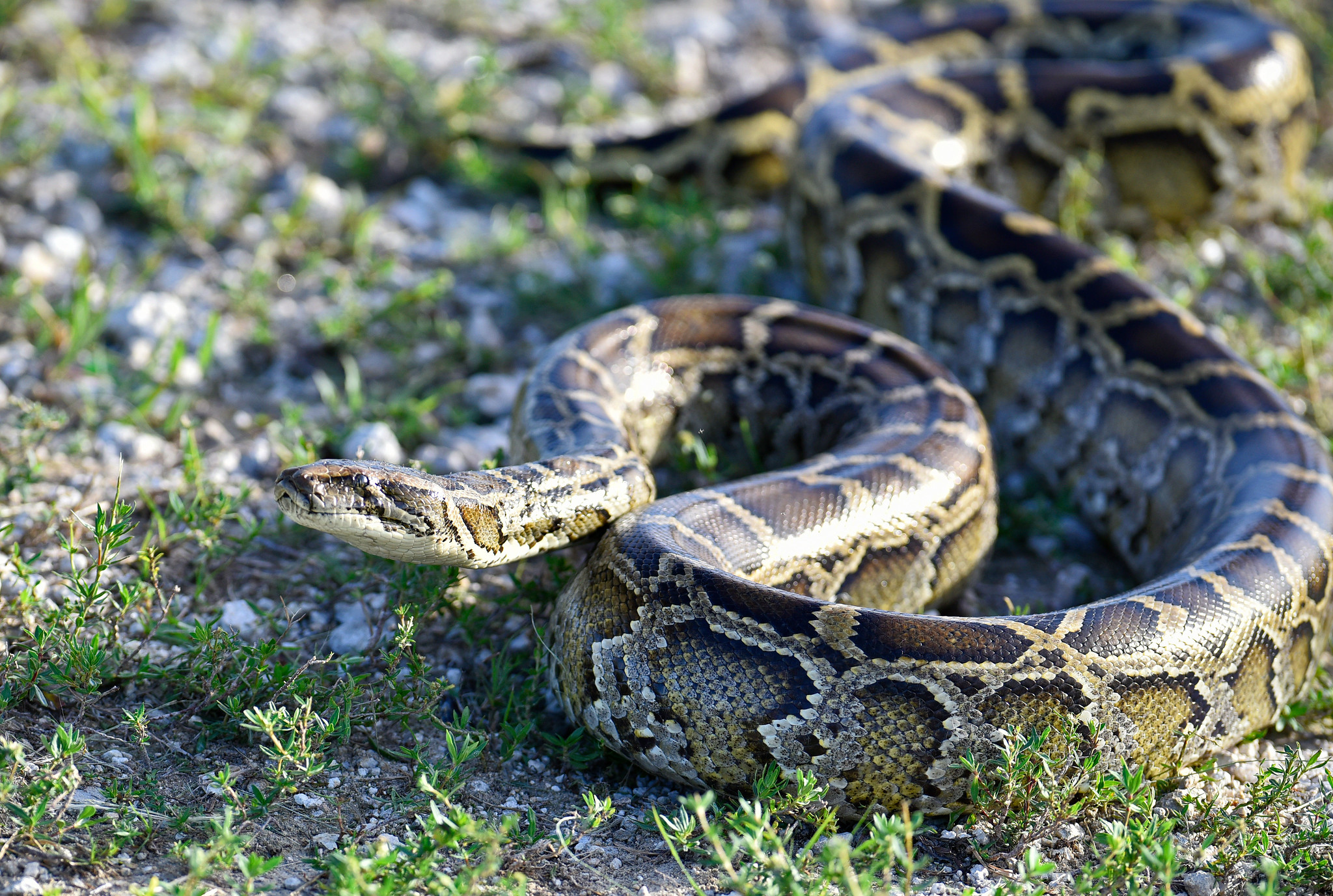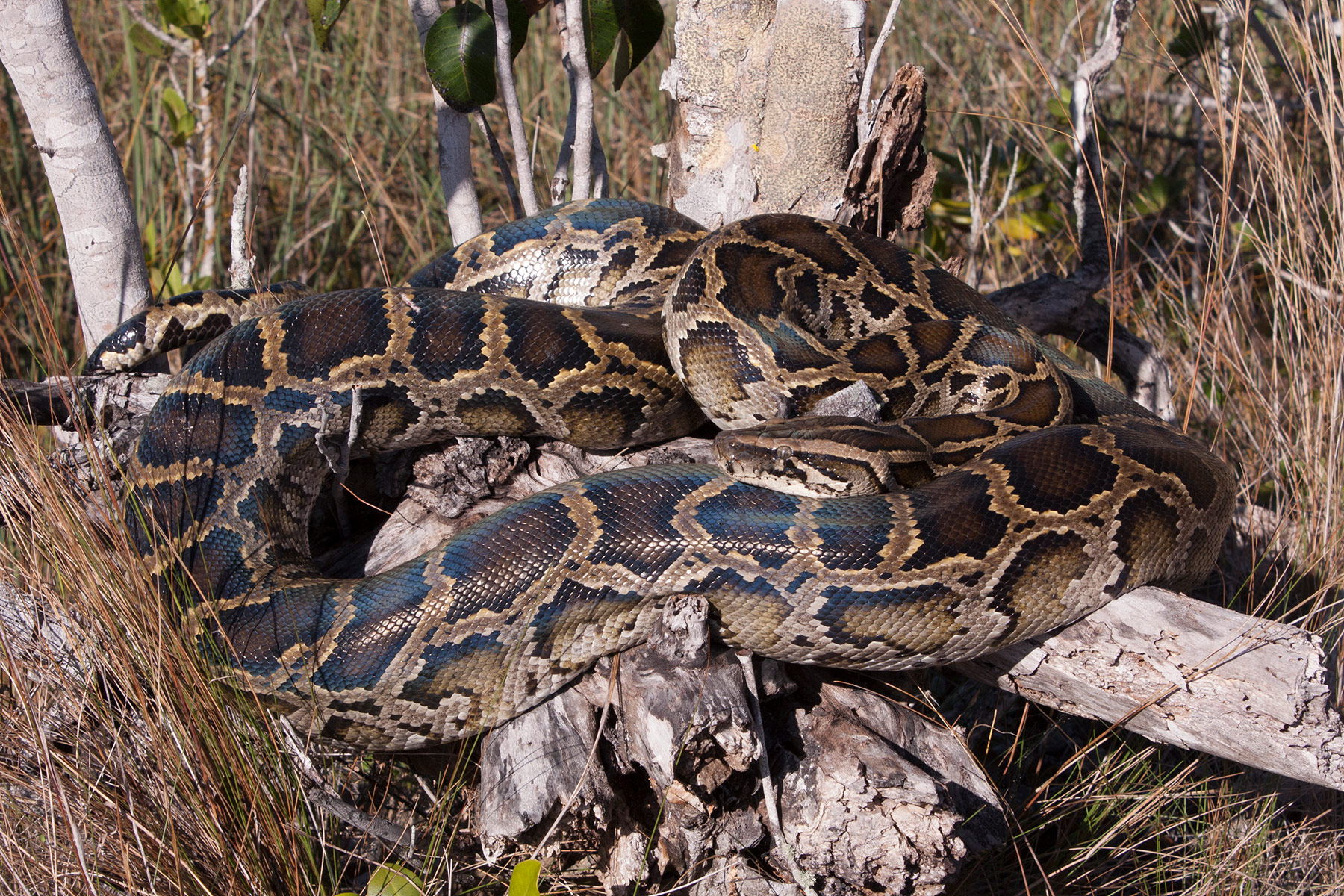Table of Contents
Introduction
Is Burmese Python venomous? This question often arises among snake enthusiasts, wildlife experts, and even casual observers. The Burmese python, scientifically known as Python bivittatus, is one of the largest snake species in the world and has gained significant attention due to its impressive size and unique characteristics.
These majestic creatures are native to Southeast Asia but have also become invasive in places like the Florida Everglades. Despite their intimidating appearance, Burmese pythons are not venomous. However, their hunting methods and physical capabilities make them formidable predators. In this article, we will delve into the biology, behavior, and ecological impact of Burmese pythons, answering the question of whether they pose a threat to humans and other animals.
Understanding the nature of Burmese pythons is not only fascinating but also crucial for conservation efforts and public safety. Whether you are a reptile enthusiast, a pet owner, or simply curious about wildlife, this comprehensive guide will provide you with accurate and trustworthy information about these incredible snakes.
Read also:Helen Randag A Comprehensive Guide To Her Life Achievements And Influence
What is a Burmese Python?
The Burmese python is a large non-venomous constrictor snake native to Southeast Asia, including countries like Myanmar, Thailand, Laos, and Vietnam. Known for its massive size, this species can grow up to 23 feet in length and weigh over 200 pounds. Its distinctive pattern consists of dark brown blotches on a lighter tan or gray background, which provides excellent camouflage in its natural habitat.
Burmese pythons are primarily found in tropical rainforests, grasslands, and marshy areas. They are semi-aquatic, meaning they are comfortable both on land and in water. These snakes are opportunistic feeders, preying on a wide variety of animals, including birds, mammals, and reptiles. Their ability to consume prey much larger than themselves is one of the reasons they are considered apex predators.
Due to their docile nature in captivity, Burmese pythons have become popular pets. However, their immense size and strength require experienced handling, and improper care can lead to dangerous situations. In the wild, they play a vital role in maintaining ecological balance by controlling populations of prey species.
Are Burmese Pythons Venomous?
The short answer is no—Burmese pythons are not venomous. Unlike venomous snakes such as cobras or rattlesnakes, Burmese pythons do not possess venom glands or fangs designed to inject toxins into their prey. Instead, they rely on their powerful bodies and constricting abilities to subdue and kill their prey.
When hunting, Burmese pythons use their sharp, backward-curving teeth to grip their prey. Once they have a firm hold, they wrap their muscular bodies around the prey and apply pressure, cutting off blood flow and causing suffocation. This method is highly effective and allows them to consume animals much larger than their head size.
While they are not venomous, Burmese pythons can still pose a threat to humans, especially if they feel threatened or cornered. Their sheer size and strength make them capable of inflicting serious injuries, particularly to inexperienced handlers. Therefore, it is essential to approach these snakes with caution and respect their natural instincts.
Read also:Andrew Steele Wife Snl A Deep Dive Into His Personal And Professional Life
How Do Burmese Pythons Hunt?
Burmese pythons are ambush predators, meaning they rely on stealth and patience to catch their prey. They often remain motionless for long periods, blending into their surroundings until an unsuspecting animal comes within striking distance. Once the prey is within range, the python strikes with incredible speed and precision.
The Constriction Process
After biting and securing their prey, Burmese pythons use their powerful muscles to constrict the animal. Contrary to popular belief, the constriction does not crush the prey's bones but instead applies pressure to the circulatory system, cutting off blood flow to vital organs. This leads to rapid unconsciousness and death.
Prey Selection
Burmese pythons have a varied diet, feeding on birds, rodents, deer, and even alligators in some cases. Their ability to consume large prey is due to their highly flexible jaws, which can stretch to accommodate animals several times the size of their head. After a large meal, they may not need to eat again for weeks or even months.
Dangers of Burmese Pythons
While Burmese pythons are not venomous, they can still pose significant risks, particularly in certain environments. In Florida, for example, these snakes have become an invasive species, wreaking havoc on local ecosystems by preying on native wildlife and disrupting food chains.
Impact on Ecosystems
Burmese pythons have been linked to a sharp decline in populations of small mammals, birds, and reptiles in the Everglades. Their presence has also led to competition with native predators like alligators, further destabilizing the ecosystem.
Risks to Humans
Although Burmese pythons rarely attack humans, they can become aggressive if they feel threatened or mishandled. In captivity, improper care or inadequate enclosures can lead to dangerous situations. It is crucial to understand their behavior and provide appropriate living conditions to minimize risks.
Venomous vs. Non-Venomous Snakes
Understanding the difference between venomous and non-venomous snakes is essential for identifying potential threats and ensuring safety. Venomous snakes, such as cobras and vipers, possess specialized glands that produce toxins, which they deliver through fangs. These toxins can cause severe pain, tissue damage, and even death in some cases.
Non-venomous snakes, like the Burmese python, lack venom glands and fangs. Instead, they rely on physical methods such as constriction or swallowing prey whole. While they may not pose the same immediate threat as venomous snakes, their size and strength can still make them dangerous in certain situations.
Key Differences
- Venomous snakes have fangs and venom glands, while non-venomous snakes do not.
- Venomous snakes often have triangular heads, while non-venomous snakes typically have rounded heads.
- Non-venomous snakes may have round pupils, whereas venomous snakes often have slit-like pupils.
Where Are Burmese Pythons Found?
Burmese pythons are native to Southeast Asia, where they inhabit tropical rainforests, grasslands, and wetlands. However, due to their popularity as exotic pets, they have also been introduced to other regions, most notably the United States.
Invasive Population in Florida
In Florida, Burmese pythons have established a significant invasive population, particularly in the Everglades. Released or escaped pets are believed to be the primary source of this invasion. The warm climate and abundant prey make the Everglades an ideal habitat for these snakes.
Global Distribution
Outside their native range, Burmese pythons have also been reported in other parts of the world, including Australia and Puerto Rico. Their adaptability and resilience make them a challenging species to control once they become established in new environments.
How to Handle a Burmese Python
Handling a Burmese python requires knowledge, experience, and caution. These snakes are powerful and can become stressed or defensive if mishandled. Here are some tips for safely interacting with Burmese pythons:
- Always approach the snake calmly and avoid sudden movements.
- Support the snake's body evenly to prevent injury or discomfort.
- Avoid handling the snake during shedding or feeding times, as they may be more aggressive.
- Use proper equipment, such as gloves and hooks, when necessary.
Signs of Stress
Burmese pythons may display signs of stress, such as hissing, striking, or attempting to escape. If you notice these behaviors, give the snake space and allow it to calm down before attempting to handle it again.
Conservation and Legal Status
In their native range, Burmese pythons face threats from habitat loss, hunting for their skin, and capture for the pet trade. While they are not currently considered endangered, their populations are declining in some areas due to these pressures.
In regions where they are invasive, such as Florida, efforts are underway to control their numbers and mitigate their impact on local ecosystems. These efforts include organized removal programs, public education campaigns, and stricter regulations on pet ownership.
Legal Restrictions
Many countries and states have implemented laws to regulate the trade and ownership of Burmese pythons. For example, in the United States, the Lacey Act prohibits the importation and interstate transport of these snakes without proper permits.
Frequently Asked Questions
Are Burmese pythons dangerous to humans?
While Burmese pythons are not venomous, their size and strength can make them dangerous if mishandled. They are generally docile but may become aggressive if they feel threatened.
What do Burmese pythons eat?
Burmese pythons are opportunistic feeders, consuming birds, mammals, and reptiles. They are capable of swallowing prey much larger than themselves.
Can Burmese pythons be kept as pets?
Yes, but they require experienced handling and proper care. Their immense size and strength make them unsuitable for novice reptile owners.
Conclusion
Burmese pythons are fascinating creatures that play an important role in their native ecosystems. While they are not venomous, their hunting methods and physical capabilities make them formidable predators. Understanding their biology, behavior, and ecological impact is crucial for ensuring their conservation and minimizing risks to humans and wildlife.
If you are considering keeping a Burmese python as a pet, make sure you are fully prepared for the responsibility. For those interested in wildlife conservation, supporting efforts to control invasive populations and protect native ecosystems is a valuable contribution. We hope this article has provided you with valuable insights into the world of Burmese pythons. Share your thoughts or questions in the comments below, and feel free to explore more articles on our site for further information!

